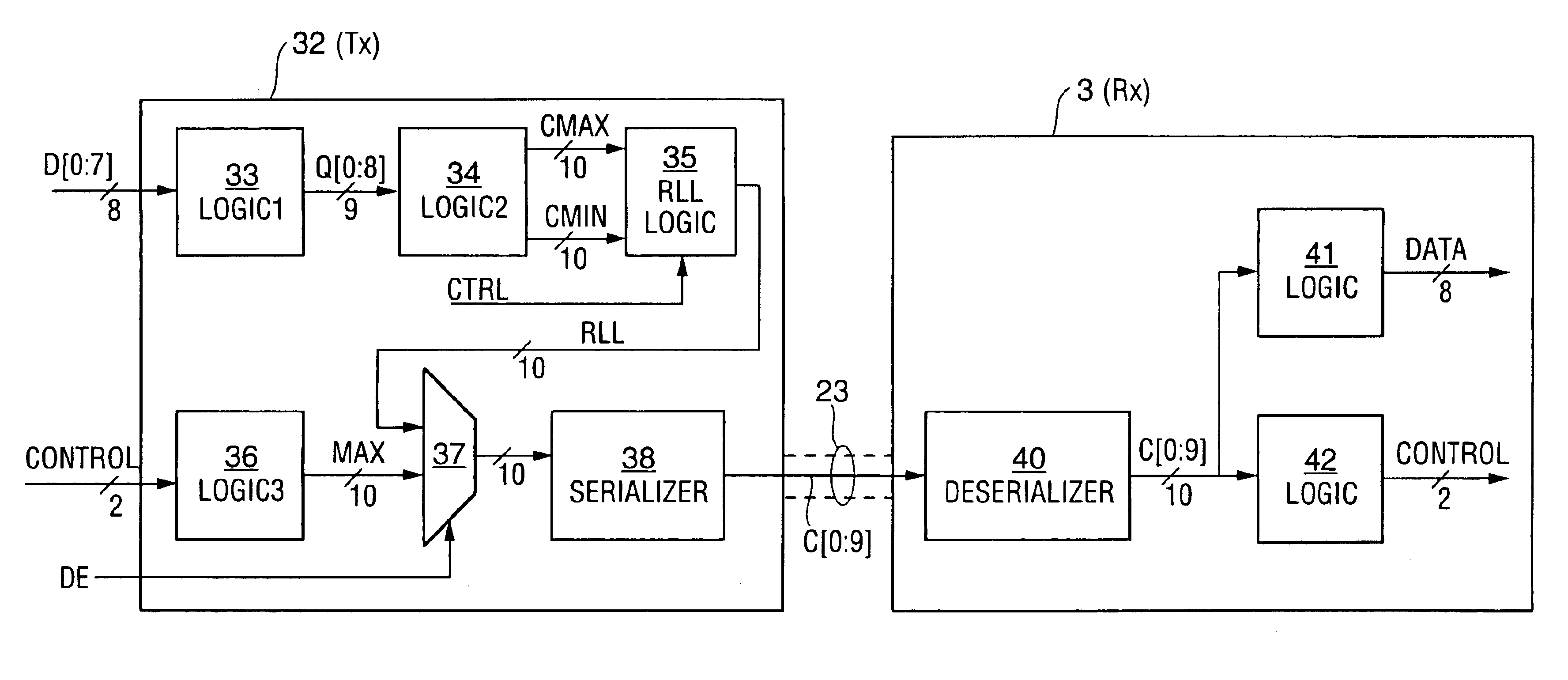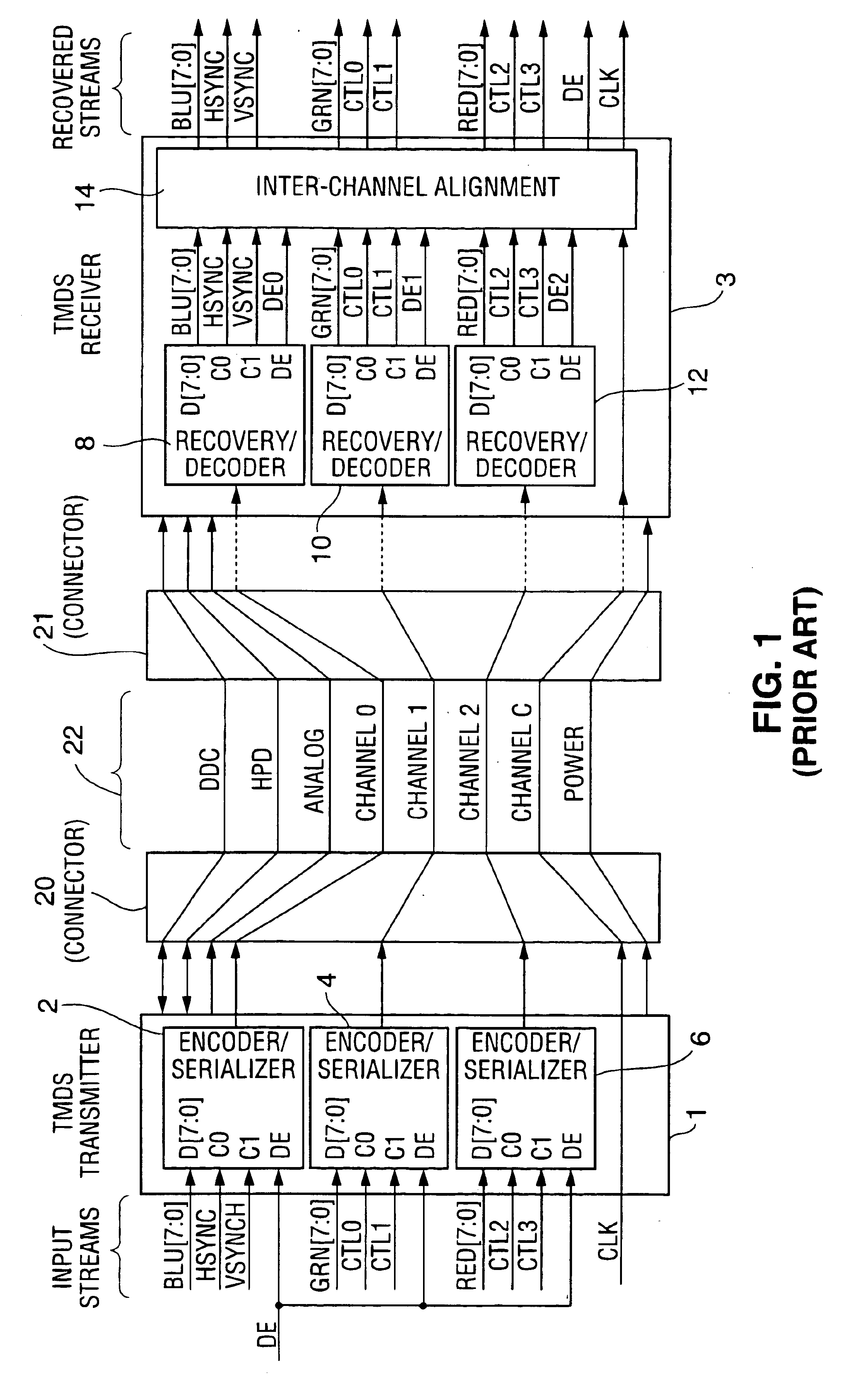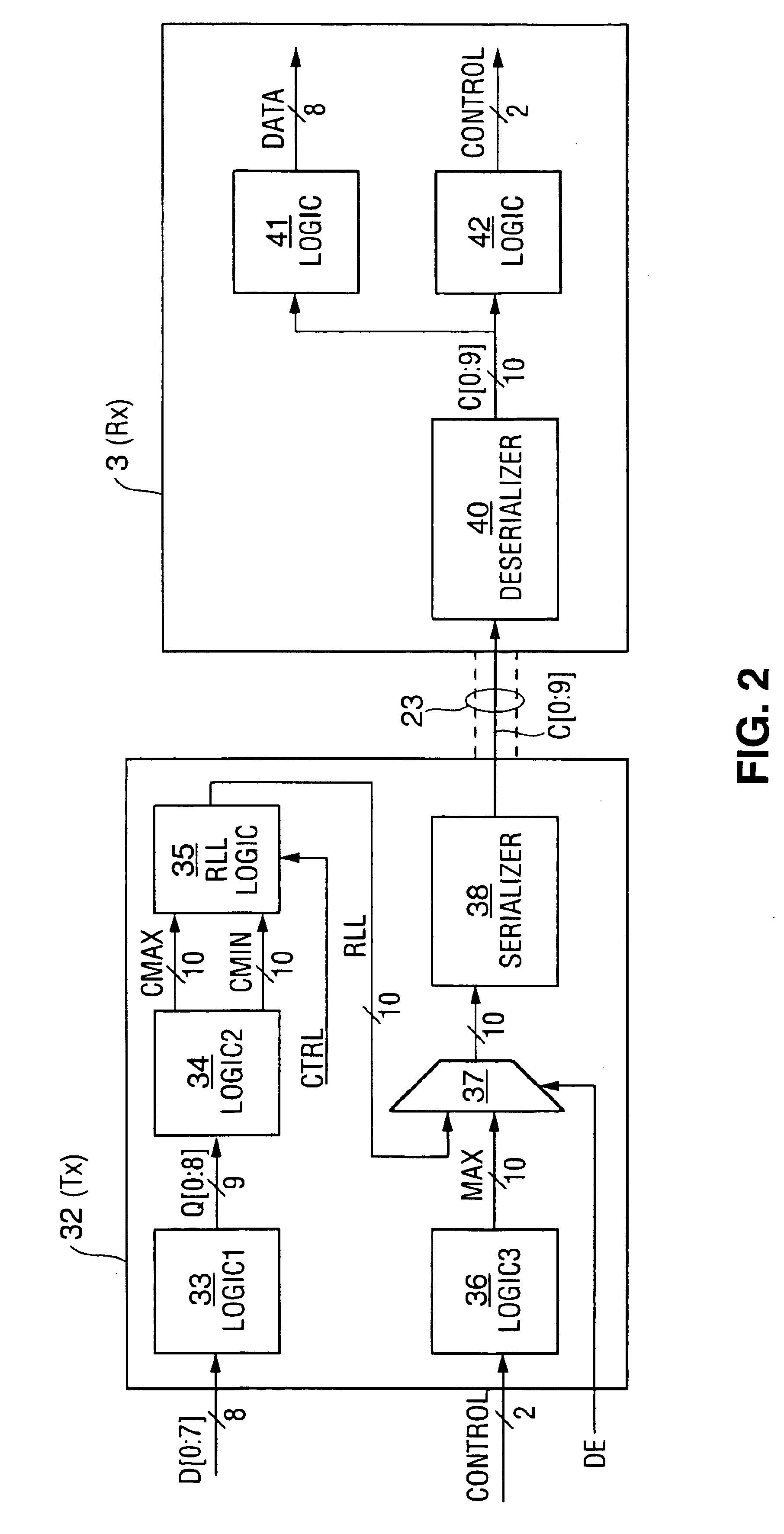Method and apparatus for run length limited TMDS-like encoding of data
a technology of encoded data and run length, applied in the direction of electrical apparatus, code conversion, individual digit conversion, etc., can solve the problems of significant inter-symbolic interference (isi) problems in some applications, reduce the maximum run length and average run length in the transmitted data stream, and reduce the emission power. , to achieve the effect of longer average run length
- Summary
- Abstract
- Description
- Claims
- Application Information
AI Technical Summary
Benefits of technology
Problems solved by technology
Method used
Image
Examples
Embodiment Construction
[0041]In some embodiments, TMDS-like encoded data are transmitted in accordance with the invention over a TMDS link. In other embodiments, TMDS-like encoded data are transmitted in accordance with the invention over a serial link that is not a TMDS link (e.g., a serial link that is not a TMDS link but is capable of transmitting encoded digital video data, and optionally also a clock for the encoded digital video data and one or more additional signals (e.g., encoded digital audio data or other encoded data), from a transmitter to a receiver. The data transmitted in accordance with the invention can, but need not, be transmitted differentially (over a pair of conductors). Also, although a TMDS link has four differential pairs (in the single pixel version), three for video data and the other for a video clock, encoded data can be transmitted in accordance with the invention over a serial link having a different number of conductors or conductor pairs.
[0042]The term “channel,” as used ...
PUM
 Login to View More
Login to View More Abstract
Description
Claims
Application Information
 Login to View More
Login to View More - R&D
- Intellectual Property
- Life Sciences
- Materials
- Tech Scout
- Unparalleled Data Quality
- Higher Quality Content
- 60% Fewer Hallucinations
Browse by: Latest US Patents, China's latest patents, Technical Efficacy Thesaurus, Application Domain, Technology Topic, Popular Technical Reports.
© 2025 PatSnap. All rights reserved.Legal|Privacy policy|Modern Slavery Act Transparency Statement|Sitemap|About US| Contact US: help@patsnap.com



